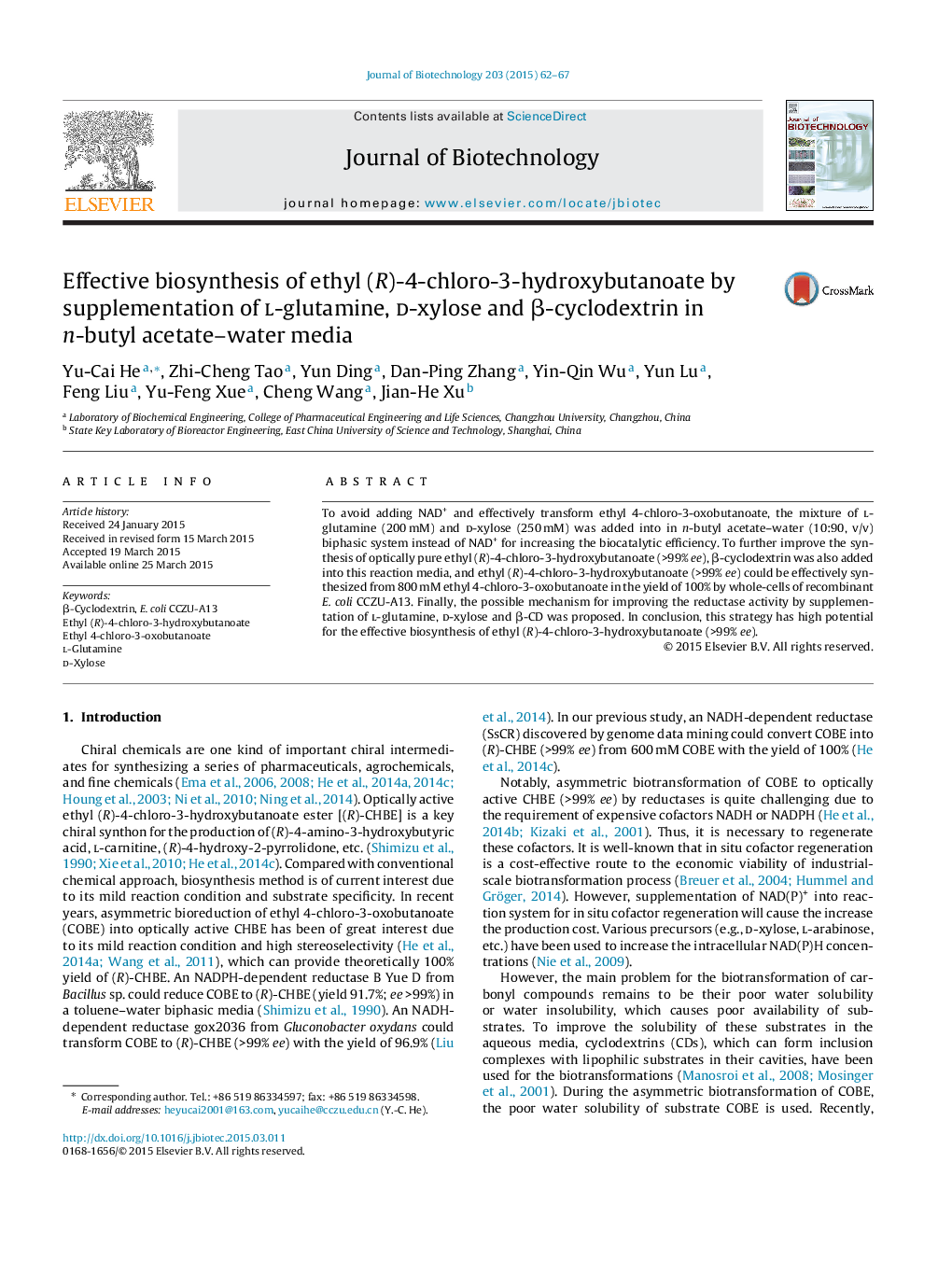| Article ID | Journal | Published Year | Pages | File Type |
|---|---|---|---|---|
| 6491152 | Journal of Biotechnology | 2015 | 6 Pages |
Abstract
To avoid adding NAD+ and effectively transform ethyl 4-chloro-3-oxobutanoate, the mixture of l-glutamine (200 mM) and d-xylose (250 mM) was added into in n-butyl acetate-water (10:90, v/v) biphasic system instead of NAD+ for increasing the biocatalytic efficiency. To further improve the synthesis of optically pure ethyl (R)-4-chloro-3-hydroxybutanoate (>99% ee), β-cyclodextrin was also added into this reaction media, and ethyl (R)-4-chloro-3-hydroxybutanoate (>99% ee) could be effectively synthesized from 800 mM ethyl 4-chloro-3-oxobutanoate in the yield of 100% by whole-cells of recombinant E. coli CCZU-A13. Finally, the possible mechanism for improving the reductase activity by supplementation of l-glutamine, d-xylose and β-CD was proposed. In conclusion, this strategy has high potential for the effective biosynthesis of ethyl (R)-4-chloro-3-hydroxybutanoate (>99% ee).
Related Topics
Physical Sciences and Engineering
Chemical Engineering
Bioengineering
Authors
Yu-Cai He, Zhi-Cheng Tao, Yun Ding, Dan-Ping Zhang, Yin-Qin Wu, Yun Lu, Feng Liu, Yu-Feng Xue, Cheng Wang, Jian-He Xu,
